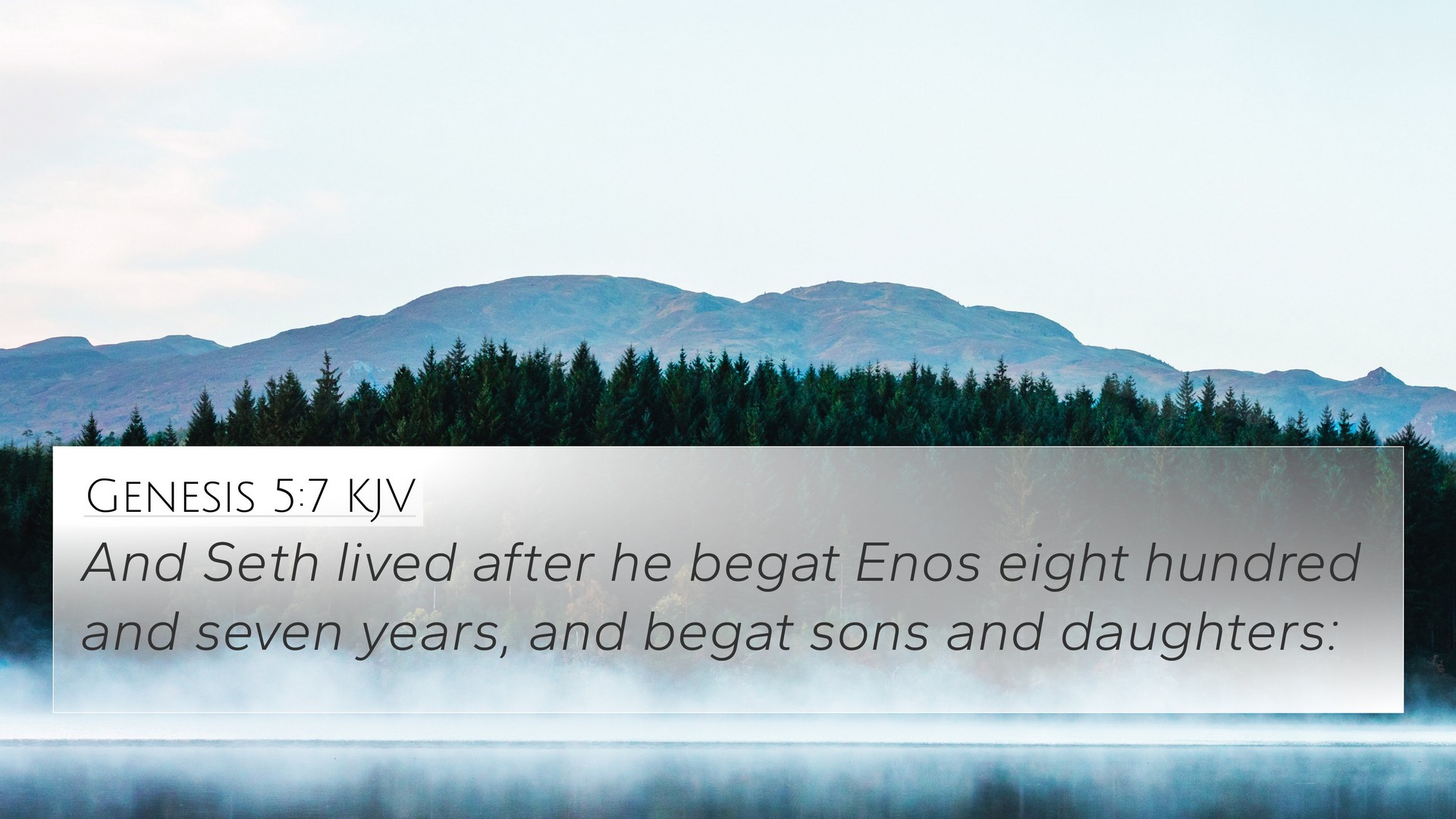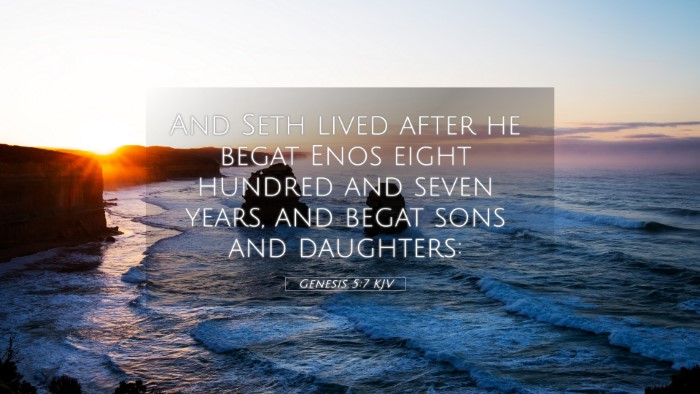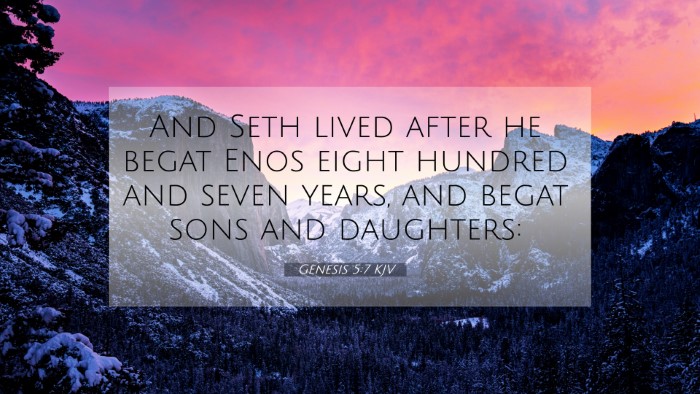Understanding Genesis 5:7
Genesis 5:7 states: "And Seth lived after he begot Enos eight hundred years, and begot sons and daughters."
This verse is part of the genealogical record in Genesis, which details the lineage from Adam through Seth. It emphasizes the generations that followed, illustrating a significant theme in the narrative of Genesis: the continuity of life and the importance of family in God's creation.
Significance of Genesis 5:7
The genealogical accounts in Genesis serve multiple purposes:
- Preservation of History: They preserve the historical account of humanity's early generations, marking the continuation of life.
- Creation Fulfilled: They demonstrate God's command to "be fruitful and multiply" as seen in Genesis 1:28.
- Theological Insights: They provide insights into God's faithfulness in sustaining the human race through successive generations.
Commentary Insights
Combining insights from Matthew Henry, Albert Barnes, and Adam Clarke reveals a deeper understanding of this verse:
- Matthew Henry: He notes the emphasis on mortality and the continuing line of descendants, highlighting the importance of Seth's lineage in the redemptive plan.
- Albert Barnes: He emphasizes that the mention of other sons and daughters indicates that humanity was multiplying during this period, signifying God’s promise of population growth.
- Adam Clarke: Clarke draws attention to the long lifespan of individuals at this time, viewing it as a contrast to the shorter lifespans post-flood, which might reflect on the lost vitality of the earth.
Cross-References in Relation to Genesis 5:7
This verse connects with several other Bible passages that speak to the themes of lineage, life, and God's promises:
- Genesis 1:28: God commands Adam and Eve to be fruitful and multiply.
- Genesis 4:25: Introduction of the next generation through Seth, acknowledging the significance of his birth.
- Genesis 6:1-2: The increasing population of earth and the intermarriage of the "sons of God" and "daughters of men."
- Psalms 128:3: Illustrates the blessed state of one who has a fruitful family.
- Luke 3:38: Genealogy of Jesus connects back to Adam, emphasizing the importance of human lineage.
- Hebrews 11:4: The faith of Abel highlights the ongoing importance of righteous descendants.
- 1 Chronicles 1:1: A parallel genealogy emphasizing Adam’s lineage.
Thematic Connections and Analytical Summary
In analyzing the connections between Bible verses, we observe:
- Inter-Biblical Dialogue: Genesis 5:7 can be linked to various sections of Scripture that reflect upon human nature—both its frailty and resilience through generations.
- Thematic Bible Verse Connections: The continuation of Seth’s seed is integral to the scriptural narrative that culminates in the coming of Christ, creating vital links across both Old and New Testaments.
- Comparative Bible Verse Analysis: Comparing the genealogical records in Matthew 1 and Luke 3 with Genesis provides a comprehensive view of God's plan through generations.
Conclusion
Genesis 5:7 is more than a genealogical entry; it mirrors the larger narrative of Scripture regarding divine providence, human continuity, and the unfolding promise of redemption. Through cross-referencing and thematic analysis, we can appreciate the intricate interconnections within the Biblical text, thereby enhancing our understanding of how each part informs and enriches the other.
Further Study Suggestions
For those interested in deeper exploration, utilizing tools for Bible cross-referencing, employing a Bible concordance, or engaging in cross-reference Bible study methods can be greatly beneficial. Resources like comprehensive Bible cross-reference materials enable a richer engagement with the Word, shedding light on the multifaceted themes present throughout Scripture.


